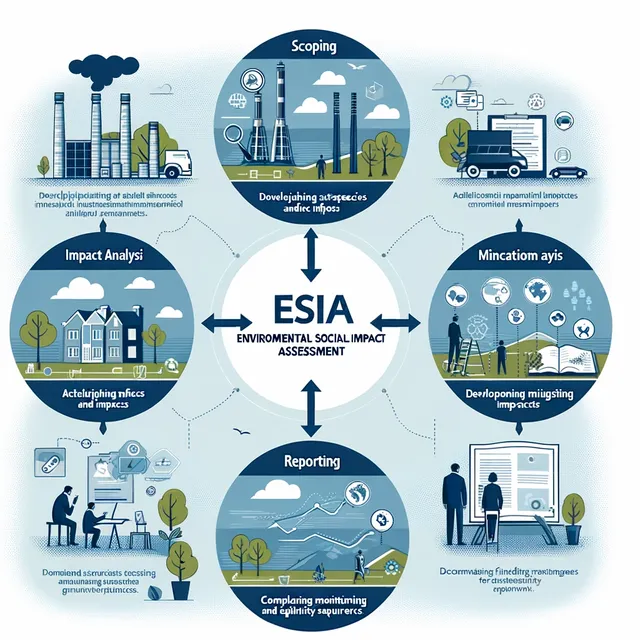ENSURING SUSTAINABLE DEVELOPMENT: ENVIRONMENTAL AND SOCIAL IMPACT ASSESSMENT (ESIA) PROCESS.

What is ESIA?
Environmental and Social Impact Assessment (ESIA) is a crucial process for examining the potential impacts of proposed projects on the environment and society. It's an analytical approach that evaluates alternatives and designs mitigation measures, as defined in Uganda's National Environment Act 2019.
Why ESIA?
ESIA ensures that projects are developed responsibly, aligning with environmental standards and societal well-being. It's essential for informed decision-making and sustainable development.
Who Conducts ESIA?
Qualified environmental practitioners
When is ESIA Required?
ESIA is mandated for significant projects, particularly those with considerable environmental and social impacts, ensuring compliance with environmental laws and community welfare.
How is ESIA Conducted?
- Pre-Assessment Phase
• Initial Consultation: Engage with the client to understand the project scope, objectives, and potential environmental and social impacts.
• Legal and Regulatory Review: Identify and review all relevant local, national, and international environmental laws, regulations, and standards applicable to the project.
• Stakeholder Identification: Determine all potentially affected parties, including local communities, government bodies, and interest groups.
• Development of Scoping Report and Terms of Reference: Conduct a preliminary study to identify key environmental and social aspects and determine the assessment's extent and focus. - Assessment Preparation
• Team Formation: Assemble a multidisciplinary team with expertise in environmental science, social impact analysis, legal compliance, and project management.
• Data Collection Plan: Develop a plan for collecting baseline data, including environmental conditions, social settings, and cultural aspects.
• Methodology Selection: Choose appropriate assessment tools and methodologies (e.g., Leopold Matrix, GIS, RIAM) for impact identification and analysis. - Impact Analysis
• Baseline Data Collection and Stakeholder Engagement: Gather data on existing environmental and social conditions in the project area.
• Impact Identification: Identify potential positive and negative impacts on the environment and society using selected methodologies.
• Impact Evaluation: Assess the magnitude, significance, and likelihood of identified impacts. Consider direct, indirect, cumulative, and long-term effects. - Mitigation and Management Plan
• Impact Mitigation Strategies: Develop strategies and measures to avoid, minimize, or mitigate adverse impacts.
• Environmental and Social Management Plan (ESMP): Prepare an EMP that outlines actions, responsibilities, monitoring, and reporting mechanisms for managing identified impacts.
• Community Engagement Plan: Establish a plan for ongoing engagement and communication with affected communities and stakeholders. - Reporting
• Draft ESIA Report: Compile findings, analyses, and recommendations into a comprehensive report. The report should include an executive summary, methodology, impact assessment, mitigation measures, EMP, and stakeholder engagement information.
• Stakeholder Review: Present the draft report to stakeholders for feedback and incorporate their input as necessary. - Finalization and Submission
• Final ESIA Report: Finalize the report incorporating feedback from stakeholders and ensuring compliance with all statutory requirements.
• Submission to Authorities: Submit the final ESIA report to relevant environmental authorities for approval. Ensure all necessary documentation and supplementary information are included. Follow up for ESIA Approval.